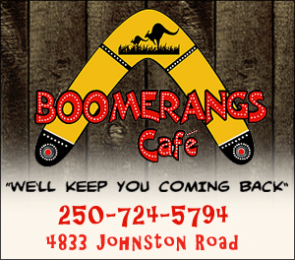
Alan Bunt recently returned from Ottawa, where he toured the Canadian War Museum. Bunt, along with 39 other military veterans, is featured in a new exhibit on the Cold War as well as a video documentary.
When he joined the military at the age of 17, Bunt completed his basic training in Winnipeg. He then completed his advanced training with the First Battalion of the Queen's Own Rifles in Calgary and shortly after was involved in the Suez Crisis in 1956.
From there, Bunt's career took a surprise turn when he was taken on a secret mission in the summer through fall of 1957.
"I came back six months later and was hand-picked for what we now know was testing for atomic bombs," Bunt said. "It was top secret and we had to sign the official secret's act. We didn't know what we were signing or where we were going. All we were told was that it was a military exercise with the American Army."
The 40 soldiers were segregated from the battalion and forced to train extensively day and night to ensure they were in good physical shape. Two months later, they were issued army eiderdown sleeping bags.
"I thought, 'Great, we're going to the Arctic'," Bunt said.
Instead, the group was transported to the desert in Las Vegas.
"That sleeping bag proved to be very good in the desert," Bunt said. "It was nice to get into because it was cold at night."
The soldiers witnessed six atomic bombs, with the first detonated about 12 miles away on the dry desert.
"Then we were told to turn our backs to the light and put our arms over our eyes and there was a countdown," Bunt said. "The ignition went on a bomb and we could see the light through our arms to the bodies beside us. It was the greatest light."
Surprised, the men turned to each other, then turned around and saw a large mushroom cloud forming.
"We thought that wasn't so bad, it looked like a dust storm," Bunt said.
That was the result of a 10 to 12 kiloton bomb. Shortly after, a voice over a loud speaker told the men to get their acts together because they were about to get closer. By the final blast, they were subjected to two 44 kt bombs only 1,000 yards from its detonation.
"Bodies were flying," Bunt said. "It buried us so bad. We were dug out and told to march to Ground Zero where we were picked up by the choppers."
Although the soldiers were warned of the immediate dangers of the blast, they were never advised of the long-term effects of radiation.
"We had no idea that we had gotten induced with so much radiation," Bunt said. "It was everywhere, even in our sleeping bags, for two months."
Although he showed no symptoms of illness, Bunt was told later that his children could be affected.
"My two kids are doing fine, but a lot had kids with cancer," he said. "Later the U.S. government proved bombs caused cancer and the American soldiers were given $85,000 compensation. The Canadian government said they didn't have troops there."
The men and their families spent twenty years fighting for a settlement and in 2008 received $24,000.
"It is the widows who raised their kids who should have gotten the compensation and didn't," Bunt said. "We can't find most of them."
In 2010, Global Currents produced the documentary, Time Bombs, which uncovers the events of the atomic bomb testing.
"When we went to the War Museum three weeks ago, the same film crew were there so there might be another documentary coming out," Bunt said. "(The first one) was very good. It tells exactly what happened and won high awards."
Bunt said the whole purpose of the experiment was to find out if the human body could take the blast and heat and still be capable of fighting, functioning and living under the conditions afterwards.
"I proved we can but like I say, it is a silent killer," he said.






